The common, or plains zebra (Equus quagga), is the most widespread and common of Africa’s three species of zebra. It occurs in south and east Africa, although its range is greatly fragmented. In addition to their native range in Africa the common zebra can also be found in a rather unlikely place, California! The town of San Simeon is home to a population of over 150 common zebras. They were originally part of newspaperman William Randolph Hearst’s private zoo. The zoo was shut down in 1937 due to financial difficulties during the Great Depression. While most of the animals were sold off or donated to zoos, the zebras stayed behind and eventually escaped. Although the 77,000 acres of land they live on is managed today as grazing land for cattle, the zebras are completely wild and self-sufficient.
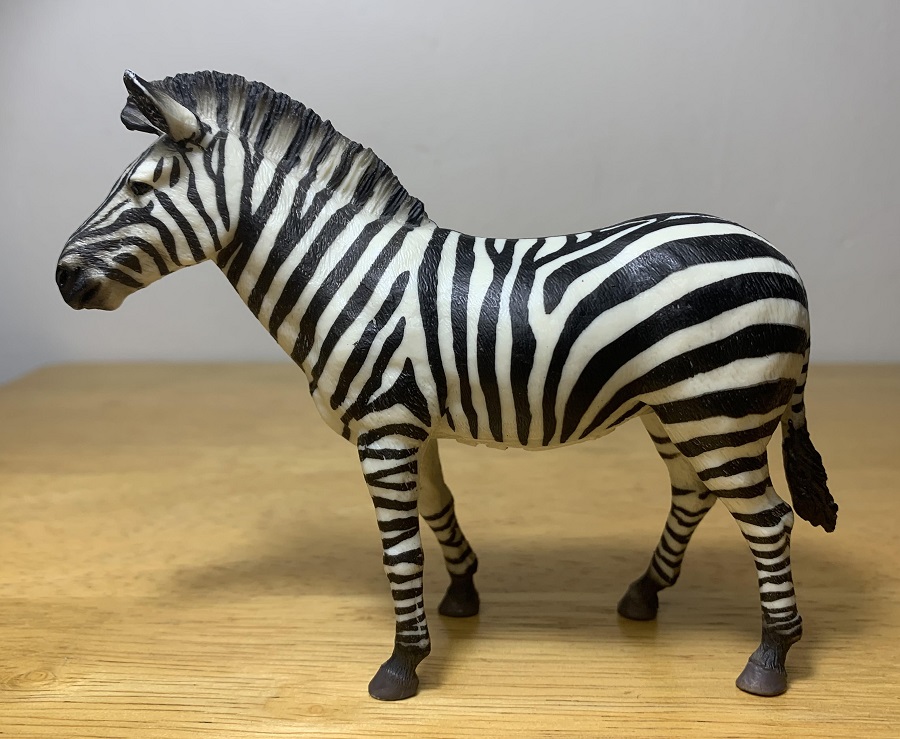
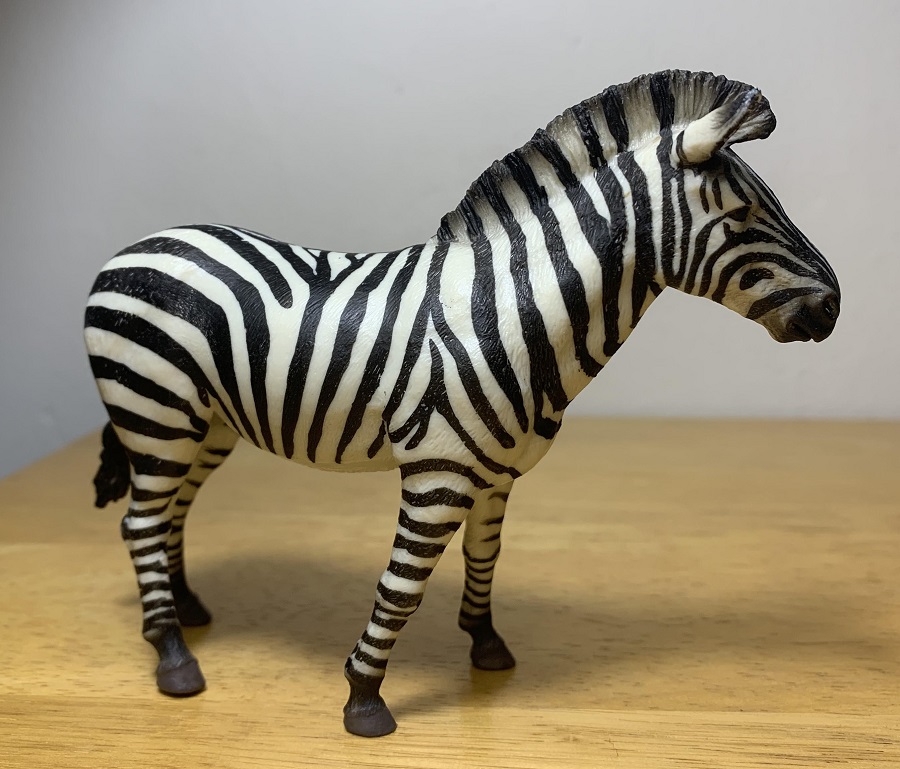
Today we’re looking at the CollectA 2018 common zebra. Its designation as a “common” zebra is interesting since the species is almost universally referred to as the plains zebra. I had a bit of a crisis in deciding which name to use for the title of this blog post but ultimately decided it best to go with CollectA’s designation instead of the more familiar one. I came across this figure at my local county fair where I immedietlly knew I had to have it. No surprise there, CollectA excels with equids, but let’s take a closer look anyway.
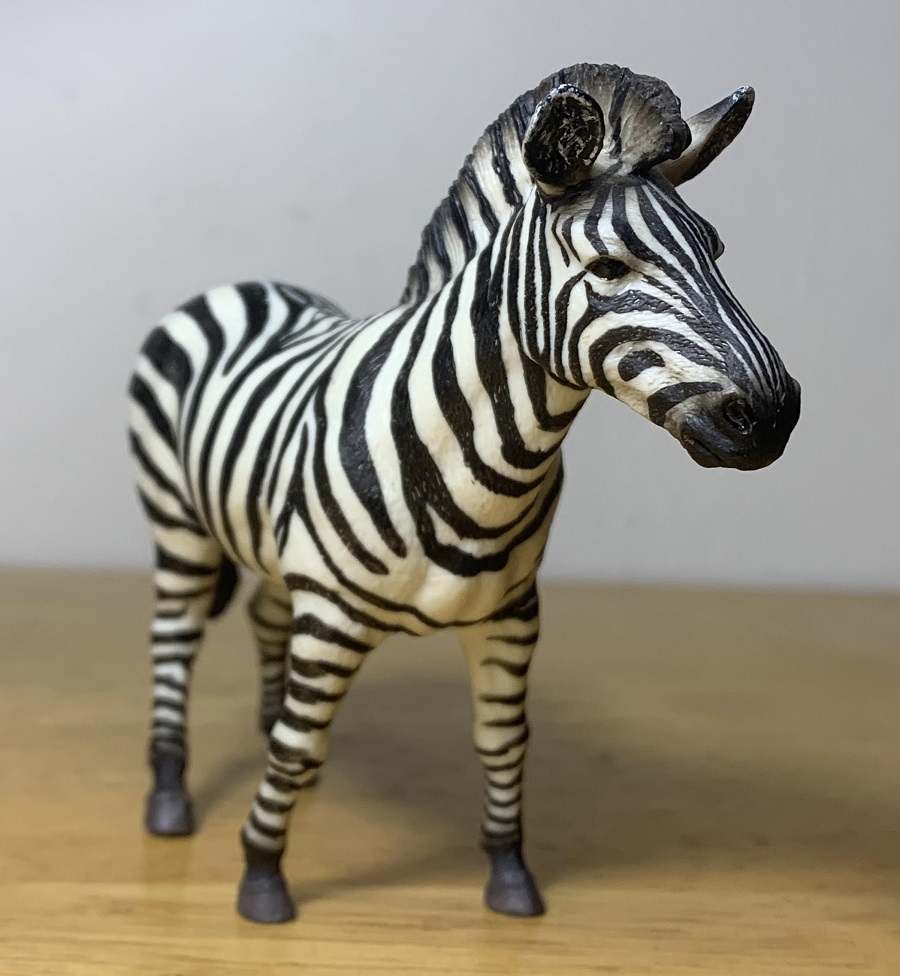
The figure measures 5” long in a straight line and stands 3” tall at the shoulder. The actual plains zebra measures 85-97” (217–246 cm) long and stands 50-55” (127–140 cm) tall at the shoulder. Using shoulder height, the figure comes out to be 1/18 in scale. The figure anatomically represents a female, complete with the two nipples that all equids have.
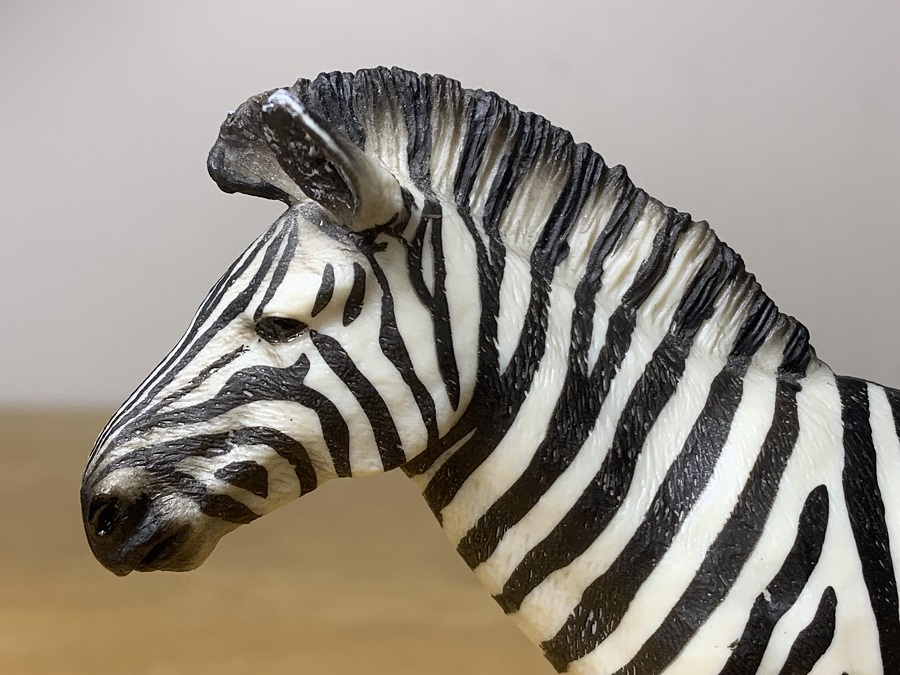
The National Audubon Society Field Guide to African Wildlife describes the plains zebra as “built like a sturdy fat pony” and that’s as apt a description of the species as I’ve ever seen. CollectA’s figure matches that description too, with a thick neck, short legs, a compact body, and amply rounded torso. The ears are appropriately rounded and perked up, and a short erect mane runs down the neck.
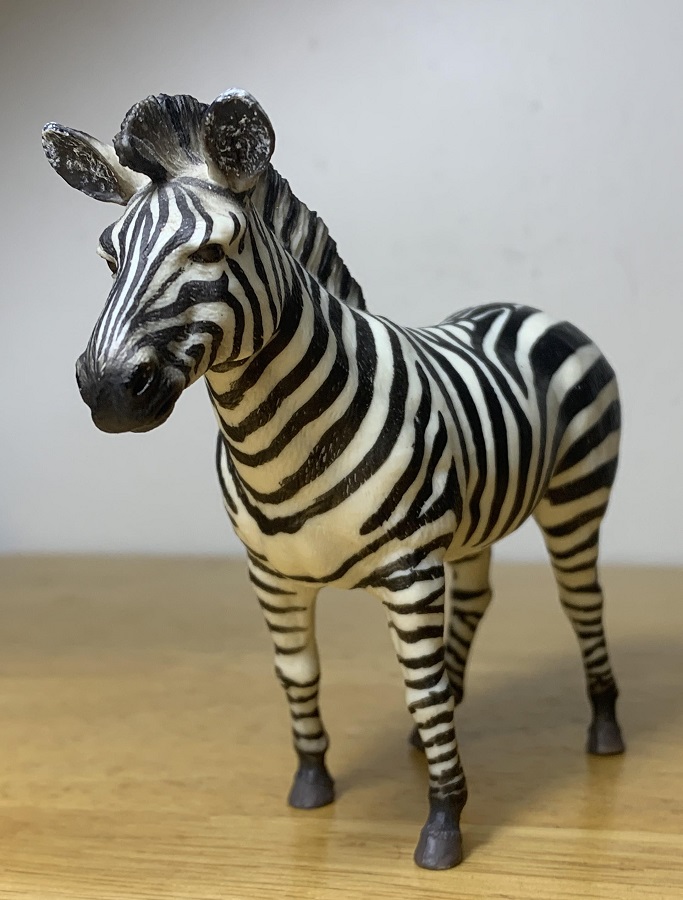
There are 6 subspecies of plains zebra and if I had to hazard a guess, I would say that this figure represents Grant’s zebra (E. q. boehmi) specifically, with its bold wide stripes, and lack of shadow stripes. This is also a familiar subspecies, being found in both the Serengeti and the Maasai Mara game reserve.
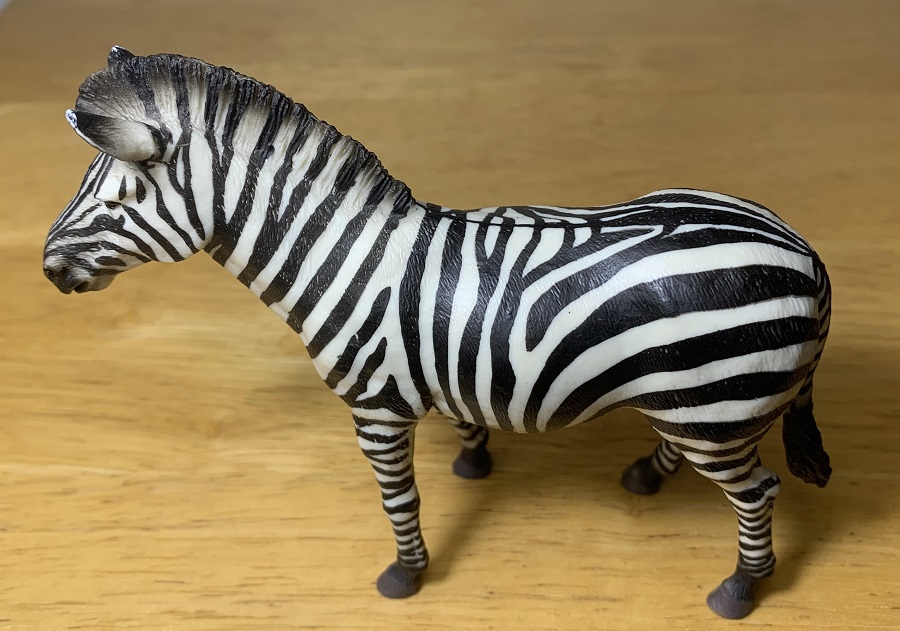
Generally speaking, the plains zebra can be distinguished from the other two zebra species by its size, being smaller than the Grevy’s (E. grevyi) and larger than the mountain zebra (E. zebra). Grevy’s zebra also have thin, narrowly spaces stripes, while the mountain zebra is slimmer, has a dewlap on its neck, and has thin, narrowly spaced stripes that end abruptly at the belly. The stripes on CollectA’s figure just barely extend onto the belly and it would have been preferable if they extended or faded out onto the belly more. For figures of the other two zebra species CollectA also makes a Grevy’s zebra that I’m unfortunately behind on acquiring and there’s no decent option for the mountain zebra.

Although each zebra’s striping is unique to the individual, they aren’t just randomly striped, and follow a specific orientation. The stripes are vertical in the front and horizontal on the hindquarters and legs. CollectA gets it right here but didn’t on their Grevy’s zebra figure. Along the back of the figure the stripes connect to a thin dorsal stripe running down the midline. Some stripes branch off from their main stripe and others branch off and reconnect. Altogether, it nicely suggests the individual variation in zebra patterning and is as complex a paintjob as I’ve ever seen on a zebra toy.
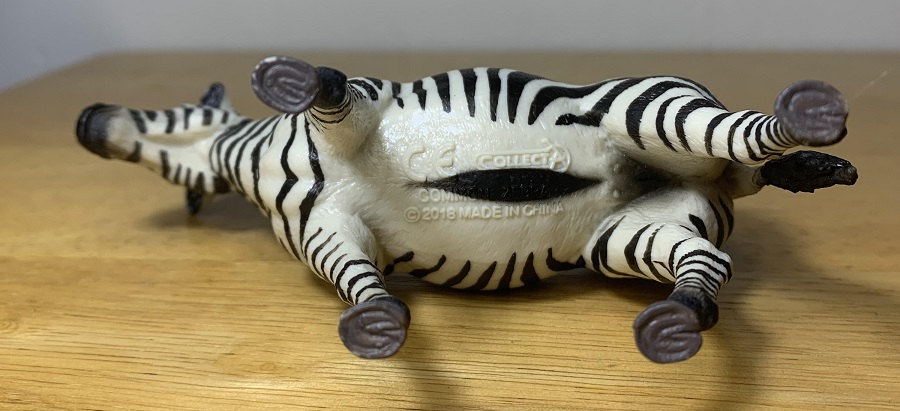
The paint application is clean and crisp too. This is especially noticeable in places where the stripes are thin and narrowly spaced, like on the muzzle, tail, and legs. The mane is tipped in black and fades gradually to white. A black slash runs along the belly and there’s a faint black patch between the hindlegs. The hooves are gray and nicely detailed on their underside. The eyes and nostrils have a glossy finish.
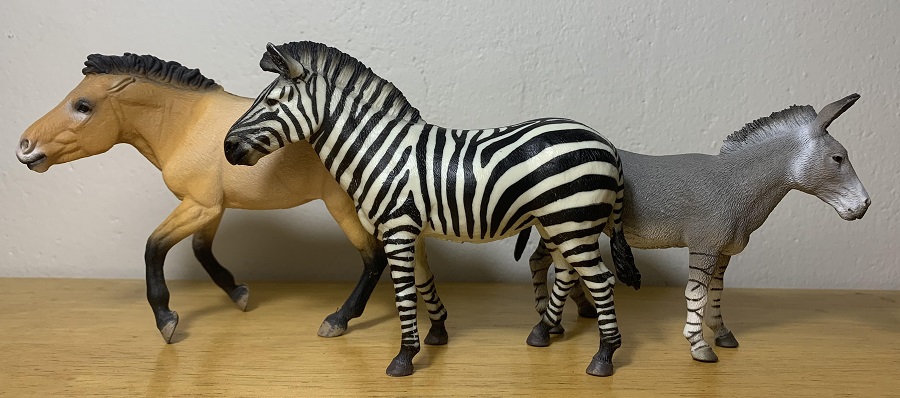
There’s a plethora of zebra figures out there to choose from but none of them are as finely crafted as this one, especially when it comes to the complexity of the striping and patterning. CollectA leads the herd with this figure, and I cannot recommend it enough. The CollectA common zebra is still in production, widely available, and retails for about $7.00.
Disclaimer: links to Ebay and Amazon on the AnimalToyBlog are affiliate links, so we make a small commission if you use them. Thanks for supporting us!




Awesome! This is my exemplar of the common zebra, too! Hard to beat CollectA if it has hooves, of any kind 🙂